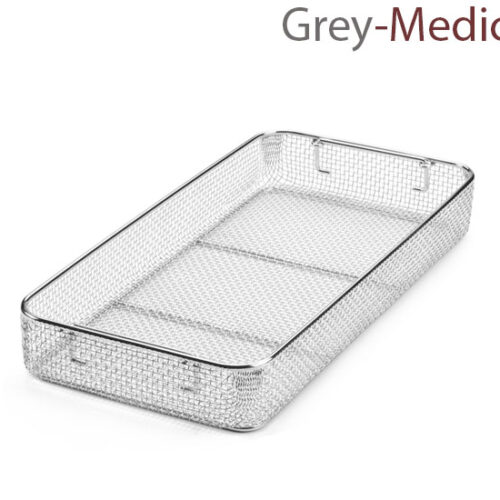In any surgical setting, the focus is often on the surgeon’s skill and the advanced technology in the operating room. However, behind every successful procedure is a meticulous process of preparation and safety, where patient outcomes are paramount. Central to this process is an essential but often overlooked piece of equipment: the sterilization tray for surgical instruments. This vital tool ensures that every scalpel, forcep, and clamp is free from contaminants, safeguarding patient health and upholding the highest standards of medical care.

What is a Sterilization Tray?
A sterilization tray is a specialized container designed to hold surgical instruments during the entire sterilization cycle. These trays are engineered to withstand the extreme conditions of autoclaves, including high temperatures, pressure, and steam. They allow sterilizing agents to penetrate and circulate freely, ensuring that every surface of the instruments inside is effectively cleaned and sterilized. Without a reliable system for organizing and protecting these delicate tools, the risk of infection and instrument damage would increase significantly.
The design of a sterilization tray for surgical instruments is a marvel of medical engineering. Typically made from materials like stainless steel, aluminum, or specialized polymers, these trays are built for durability and repeated use. They often feature perforated bases and lids to facilitate the flow of steam or chemical sterilants. Inside, you might find silicone mats or adjustable holders that secure the instruments, preventing them from shifting and sustaining damage during handling and sterilization. This careful organization also helps surgical teams quickly identify and access the tools they need during a procedure.
The Importance of Proper Sterilization in Surgery
The primary goal of using a sterilization tray is to prevent surgical site infections (SSIs). These infections can lead to severe complications for patients, resulting in longer hospital stays, additional treatments, and increased healthcare costs. By ensuring that all instruments are sterile, healthcare facilities create a controlled environment that minimizes the presence of harmful microorganisms like bacteria, viruses, and fungi. This commitment to sterility is a fundamental principle of modern medicine.
Beyond patient safety, proper sterilization protocols protect the integrity and longevity of the surgical instruments themselves. These tools are significant investments, often crafted with precision and from high-grade materials. A well-designed sterilization tray for surgical instruments protects them from scratches, bending, or breakage. By keeping instruments organized and secure, these trays help maintain their sharpness and functionality, ensuring they perform as intended for years to come. This not only saves costs associated with replacement but also ensures that surgeons have reliable tools at their disposal.
Innovations in Sterilization Tray Technology
The field of medical technology is always advancing, and sterilization trays are no exception. Companies at the forefront of this space are constantly developing new features to enhance safety and efficiency. For example, modern trays may include features like color-coded systems for easy identification of instrument sets, locking mechanisms to prevent accidental opening, and designs that optimize stacking and storage in sterile supply rooms.
GreyMedical®, a privately owned medical technology company dedicated to innovation and excellence in the craft of surgical instruments, understands the critical nature of this process. Their commitment to quality extends to the accessories that support their instruments, recognizing that the entire system must work together flawlessly. The evolution of the sterilization tray for surgical instruments reflects a deeper understanding of the complexities of sterile processing. Innovations focus on improving workflow for sterile processing technicians, reducing the potential for human error, and ensuring a consistent, verifiable level of sterility for every single procedure.
Choosing the Right Sterilization System
Selecting the appropriate sterilization tray is not a one-size-fits-all decision. Healthcare facilities must consider several factors, including the types of instruments being used, the sterilization methods employed (e.g., steam, ethylene oxide), and the specific needs of their surgical teams. The size, weight, and configuration of the instruments will dictate the type of tray required. For delicate microsurgical tools, a tray with soft silicone holders might be necessary, while larger orthopedic instruments may need a more robust and open container.
Ultimately, the goal is to create a seamless and reliable system that supports the entire surgical workflow, from the sterile processing department to the operating room. Investing in a high-quality sterilization tray for surgical instruments is an investment in patient safety, instrument care, and operational efficiency. It’s a critical component that empowers healthcare professionals to perform their duties with confidence, knowing their tools are perfectly prepared for the task at hand.
In conclusion, the sterilization tray is a fundamental element in maintaining the sterile field and ensuring positive patient outcomes. Its role in organizing, protecting, and facilitating the sterilization of surgical tools cannot be overstated. As medical technology continues to advance, so too will these essential containers, further enhancing the safety and effectiveness of surgical care around the world.

